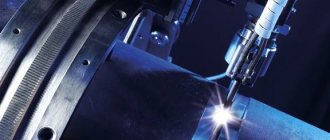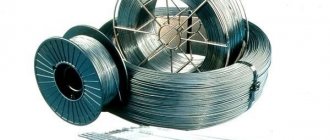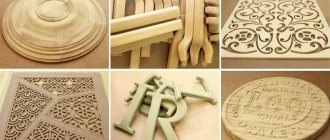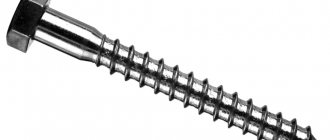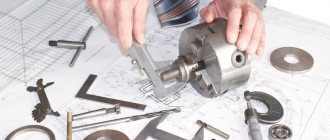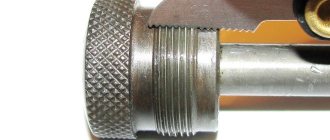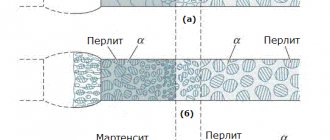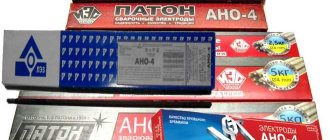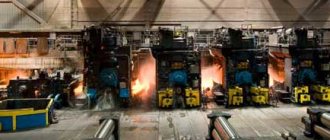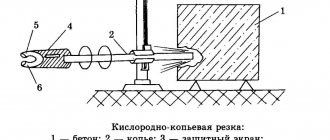High strength bolts are fastening elements with high durability. They differ in that they are made of a special grade of metal (low-alloy and alloy steel) using modern specific technology. The material used contains carbon up to 0.4 percent. Bolts are made using regular cold or hot heading, followed by subsequent thread rolling and heat treatment, in which the high-strength element is coated with a specific protective layer of up to 50 microns. Also, the coating may not be used. All components of the product must be extremely reliable and resistant to high loads. Fastening thanks to high-strength bolts is considered shear-resistant.
Operation of bolts of this type are widely used in connecting detailed elements in the mechanical engineering industry, in agriculture, and in the formation of railway fastenings. This type of fastening element is used where the traditional simple fastening method is not able to withstand heavy loads. They are used in fastening serious structures in construction, for example, the construction of a bridge. High-strength bolts are essential elements in the engineering industry and construction.
High-strength bolts do not require drilling and cleaning of the hole, which requires a hole 3 millimeters larger in diameter. The joining surface can be cleaned in three ways: fire, sand jet, cleaning with a steel brush. A cleaned surface may cause rust to form. For this reason, an important condition is the assembly of a variety of connections on high-strength bolts, which are produced in accordance with GOST, while allocating a small amount of time during the precise and timely processing of the surface layer and also securing the bolt.
An important factor is the phased installation of bolts of the maximum strength class. They begin to install them from the middle of the joint, smoothly moving to the outskirts. Thanks to the plug fixed in the hole before fixing the bolt, it becomes possible to control a list of indicators: the geometric dimension of the future structure, the accuracy of its assembly. Before installing high-strength hardware according to GOST 22356-77, you need to clean it and turn the nut, or rather along the thread of the bolt.
It is strictly prohibited to lubricate the cutting of the product. The lubricant mixture may enter the shear cavity. It is allowed to add a minimum of lubricant to the nut thread before screwing it onto the bolt. The use of pneumatic impact wrenches makes it quicker and easier to install and tighten a durable bolt. By using a torque wrench, you can control the installation of a high strength bolt.
When installing a bolt of a high strength class, its tension is fixed and monitored. The tension of high-strength bolts is assessed in two ways:
1. The first option is to mark one of the edges of the nut and unscrew it one-sixth of a turn. Subsequently, the nut is tightened using a torque wrench, and if suddenly it shows the calculation torque at the previous position, it means that the bolt was tightened correctly.
2. The second option is to put the nut on the wrench and tighten it. A high-strength bolt is tightened to values no less than the calculated ones when the indicator shows the corresponding calculations before turning the nut. After checking, the bolt heads need to be painted.
What is a high strength bolt
This type of fastening has several classifications, but the most significant characteristic is increased resistance to heavy loads. Thanks to this, the structures connected by bolted fasteners become highly strong and durable. High-strength bolts, nuts and washers are widely used for metal structures, construction work and in heavy industry and mechanical engineering.
A bolt is a rod made of a metal alloy with an external thread applied to it and a head, usually in the form of a hexagon, for a wrench. Fastening is done by screwing on a nut of the required size. To distribute the load evenly, washers are used.
Production of high-strength fasteners
The technological process for manufacturing fasteners characterized by high strength includes the following steps:
- Preparing a metal alloy for upsetting.
- Stage of planting products. This operation can be performed using two methods - both hot and cold heading. The purpose of this is to reduce the length of the workpiece while simultaneously increasing its thickness.
- Thread rolling.
- Heat treatment. This is a mandatory step for high-strength fasteners. The main types of heat treatment are: surface or volumetric hardening, annealing (sometimes of the first and second kind), tempering. The type of heat treatment is selected by the manufacturer.
- Anti-corrosion protection. You should be aware that inorganic coatings made by chromating and phosphating are not suitable for high-strength fasteners.
- Acceptance of finished products.
- Package.
Application area
High-strength bolted connections are designed for the installation of complex building structures that will be subject to:
- high temperature changes;
- precipitation;
- strong and frequent winds;
- contact with chemicals.
Since the dimensions of fasteners provided for by GOST vary, the scope of application of hardware is extensive:
- machines, equipment;
- agricultural machinery, mechanical engineering;
- construction of bridges, buildings;
- shipbuilding;
- industry, production.
Friction connection with high-strength bolts perfectly copes with the task of strong and reliable installation of structures subject to dynamic loads and vibrations.
This fastener is widely used in everyday life. It is ideal for renovating apartments and balconies; it will securely fasten any structures to concrete walls. Car enthusiasts cannot do without such bolts when repairing their car, especially wheel fastenings.
Bolt GOST 22353-77
High-strength bolt GOST 22353-77.
Steel grade: 40X, 40X “select”. Strength class - 110.
Scope of application: for the construction of critical metal bridges, building and other structures subject to significant loads.
Bolts GOST 22353 are used in conjunction with high-strength nuts and washers GOST 22355.
The main characteristics of high-strength bolts GOST 22353-77 are given in the table:
| d | 16 | (18) | 20 | (22) | 24 | (27) | 30 | 36 | 42 | 48 |
| Thread pitch | 2 | 2,5 | 3 | 3,5 | 4 | 4,5 | 5 | |||
| d 1 | 16 | 18 | 20 | 22 | 24 | 27 | 30 | 36 | 42 | 48 |
| S | 27 | 30 | 32 | 36 | 41 | 46 | 55 | 65 | 75 | |
| TO | 12,0 | 13,0 | 14,0 | 15,0 | 17,0 | 19,0 | 23,0 | 26,0 | 30,0 | |
| e, no less | 29,9 | 33,3 | 35,0 | 39,6 | 45,2 | 50,9 | 60,8 | 72,1 | 83,4 | |
| r | From 1.5 to 2.0 | From 2.0 to 2.5 | From 3.0 to 4.0 | From 4.0 to 5.0 | ||||||
| Nominal rod length | Thread length b at nominal thread diameter d | |||||||||
| 16 | (18) | 20 | (22) | 24 | (27) | 30 | 36 | 42 | 48 | |
| 40 | X | — | — | |||||||
| 45 | 38 | X | — | — | — | |||||
| 50 | 38 | 42 | X | — | ||||||
| 55 | 38 | 42 | 46 | X | — | |||||
| 60 | 38 | 42 | 46 | 50 | X | — | ||||
| 65 | 38 | 42 | 46 | 50 | 54 | |||||
| 70 | 38 | 42 | 46 | 50 | 54 | 60 | — | |||
| 75 | 38 | 42 | 46 | 50 | 54 | 60 | 66 | |||
| 80 | 38 | 42 | 46 | 50 | 54 | 60 | 66 | — | ||
| 85 | 38 | 42 | 46 | 50 | 54 | 60 | 66 | |||
| 90 | 38 | 42 | 46 | 50 | 54 | 60 | 66 | 78 | ||
| (95) | 38 | 42 | 46 | 50 | 54 | 60 | 66 | 78 | ||
| 100 | 38 | 42 | 46 | 50 | 54 | 60 | 66 | 78 | ||
| (105) | 38 | 42 | 46 | 50 | 54 | 60 | 66 | 78 | 90 | |
| 110 | 38 | 42 | 46 | 50 | 54 | 60 | 66 | 78 | 90 | |
| (115) | 38 | 42 | 46 | 50 | 54 | 60 | 66 | 78 | 90 | |
| 120 | 38 | 42 | 46 | 50 | 54 | 60 | 66 | 78 | 90 | 102 |
| (125) | 38 | 42 | 46 | 50 | 54 | 60 | 66 | 78 | 90 | 102 |
| 130 | 38 | 42 | 46 | 50 | 54 | 60 | 66 | 78 | 90 | 102 |
| 140 | 38 | 42 | 46 | 50 | 54 | 60 | 66 | 78 | 90 | 102 |
| 150 | 38 | 42 | 46 | 50 | 54 | 60 | 66 | 78 | 90 | 102 |
| 160; 170; 180; 190; 200; 220; 240; 260; 280; 300 | 44 | 48 | 52 | 56 | 60 | 66 | 72 | 84 | 96 | 108 |
| Bolt length, mm | Theoretical weight 1000 pcs. high-strength bolts, kg, with nominal thread diameter d, mm | |||||||||
| 16 | (18) | 20 | (22) | 24 | (27) | 30 | 36 | 42 | 48 | |
| 40 | 111 | |||||||||
| 45 | 118 | 151 | ||||||||
| 50 | 126 | 161 | 198 | |||||||
| 55 | 134 | 171 | 211 | 267 | ||||||
| 60 | 141 | 180 | 223 | 282 | 367 | |||||
| 65 | 149 | 190 | 235 | 297 | 386 | |||||
| 70 | 157 | 200 | 247 | 312 | 404 | 538 | ||||
| 75 | 164 | 210 | 259 | 326 | 421 | 560 | 621 | |||
| 80 | 172 | 219 | 271 | 341 | 438 | 582 | 648 | |||
| 85 | 180 | 229 | 283 | 355 | 456 | 604 | 676 | |||
| 90 | 188 | 239 | 295 | 370 | 473 | 627 | 703 | 1081 | ||
| 95 | 195 | 249 | 307 | 384 | 491 | 649 | 730 | 1120 | ||
| 100 | 203 | 258 | 319 | 399 | 508 | 671 | 758 | 1159 | ||
| 105 | 210 | 268 | 331 | 414 | 525 | 693 | 785 | 1199 | 1723 | |
| 110 | 218 | 278 | 343 | 428 | 543 | 715 | 812 | 1238 | 1776 | |
| 115 | 226 | 288 | 355 | 443 | 560 | 737 | 839 | 1277 | 8130 | |
| 120 | 233 | 297 | 367 | 457 | 578 | 759 | 867 | 1316 | 1884 | 2462 |
| 125 | 241 | 307 | 379 | 472 | 595 | 781 | 894 | 1356 | 1937 | 2532 |
| 130 | 249 | 317 | 391 | 487 | 612 | 803 | 921 | 1395 | 1991 | 2602 |
| 140 | 264 | 336 | 415 | 516 | 646 | 847 | 976 | 1474 | 2098 | 2743 |
| 150 | 279 | 356 | 439 | 545 | 682 | 891 | 130 | 1552 | 2205 | 2883 |
| 160 | 293 | 373 | 461 | 572 | 714 | 932 | 1080 | 1625 | 2304 | 3004 |
| 170 | 309 | 393 | 485 | 601 | 748 | 976 | 1135 | 1703 | 2412 | 3145 |
| 180 | 324 | 412 | 509 | 630 | 783 | 1020 | 1189 | 1782 | 2519 | 3285 |
| 190 | 340 | 432 | 533 | 659 | 818 | 1064 | 1244 | 1860 | 2626 | 3425 |
| 200 | 355 | 451 | 557 | 688 | 853 | 1108 | 1299 | 1939 | 2733 | 3566 |
| 220 | 386 | 490 | 605 | 747 | 922 | 1196 | 1408 | 2096 | 2948 | 3846 |
| 240 | 416 | 529 | 654 | 805 | 992 | 1285 | 1517 | 2253 | 3162 | 4127 |
| 260 | 447 | 568 | 702 | 863 | 1061 | 1303 | 1626 | 2410 | 3377 | 4408 |
| 280 | 478 | 607 | 750 | 922 | 1131 | 1461 | 1735 | 2568 | 3591 | 4688 |
| 300 | 509 | 646 | 798 | 980 | 1200 | 1549 | 1844 | 2725 | 3806 | 4969 |
Note: It is not recommended to use high strength bolt sizes that are bracketed. The "x" denotes high-strength bolts for which the thread length is equal to the length of the shank (i.e., full thread).
Release form: wooden boxes weighing 50 kg.
You can find out prices for high-strength bolts and place an order for these products from our specialists.
Classification by strength and marking
This fastener is manufactured strictly in accordance with GOST and is marked accordingly. It's easy to decipher:
- In terms of the strength class of the coating of the top layer of fasteners, bolted hardware occupy the best positions on a scale from 6.8 to 12.9. Marking of high-strength bolts starts from 8.8. To make it better visible, the designation of high-strength bolts is placed on the head of the fastener.
- The additional letters ХЛ on the marking next to the strength class of the bolts mean that the fasteners can be used in conditions of very low temperatures down to -60 ° C.
- Marking with the letter U limits the low temperature regime - not lower than - 40°C.
- English S informs about the increased dimensions of the bolt head.
Thanks to the markings on the head of the hardware, you can quickly select the required fastener.
Strength classes
Strength classes for fasteners that differ in structure and, accordingly, in functionality vary.
Fasteners with a rod - threaded rods, screws and various bolts. Strength characteristics of such elements made of steel:
- carbon, must meet the requirements of one of the following 11 classes: 12.9; 10.9; 9.8; 8.8; 6.8; 6.6;5.8; 5.6; 4.8; 4.6 and 3.6. The high-strength category usually includes rod fasteners of classes 12.9, 10.9, 9.8 and 8.8;
- stainless, must meet the standards of one of three classes, designated by two numbers - 80, 70 and 50. High-strength stainless fasteners are designated by the number “80”, preceded by a hyphen and the grade of austenitic steel, for example, A4-80.
Fasteners with internal threads - nuts. The requirements for their strength depend on the ratio of the height of such a product (denoted by the letter “B”) to the diameter (letter “D”).
- Nuts with V/D≈0.8, V/D≈1.2 and V/D≈1.5 are subject to seven class conditions: 12; 10; 9; 8:6; 5; 4. Nuts of classes 12 are considered high-strength; 10; 9 and 8;
- With regard to the strength characteristics of low nuts with V/D <0.8, the standards of two classes apply - 04 and 05. The main purpose of these products is to prevent loosening of the threaded connection, and they do not bear a force load. Therefore, low nuts are not a type of high-strength fastener.
Steels for making bolts
For the manufacture of high-strength fasteners, alloy carbon steel of increased strength and durability is used. Special manufacturing technologies include hot or cold heading of blanks, which significantly increase the level of strength. Mandatory heat treatment in electric furnaces gives the product anti-corrosion properties, greatly increases strength, and extends service life.
High-strength fastener material
To ensure fasteners have high strength, only certain grades of steel are used in their production. Let's consider this issue in more detail.
High strength bolts
When choosing raw materials for the manufacture of such fasteners, manufacturers take into account, first of all, consumer requirements for the strength characteristics of the final product.
Strength class 12.9. In this case, the following grades of steel are usually used:
- chromium-nickel-molybdenum high-quality alloyed structural steel St.40ХНМА;
- chromium-silicon-manganese alloy structural St. 35HGCA;
- medium-alloyed structural high-quality St. 30XGSA.
Strength class 10.9. The following steels are suitable:
- Art.35ХGCA and Art.30ХGCA;
- alloyed structural St.40X and St.40X Select;
- cold-worked carbon structural steel St.40M2;
- high-quality carbon structural St.45G and St.45;
- high-quality alloy structural St. 38XA;
- low-alloy structural St.35X.
Strength class 9.8. The following steels are used in this case:
- boron manganese alloyed St.20G2R;
- Art.35ХGCA and Art.30ХGCA;
- Art.40X and Art.38XA;
- Art.45 and Art.35X;
- structural high-quality carbon St.35.
Strength class 8.8. The following steel grades are used: St.20G2P, St.40X, St.38XA, St.35X, St.35 St.45.
High strength nuts
For the manufacture of high-strength nuts, steel of almost all of the above grades is used.
- Strength class 12. Suitable steels are St.40ХНМА and St.30ХГСА.
- Strength class 10. Alloys of grades St.40ХНМА, St.30ХГСА, St.40X, St.45, St.38XА and St.35X are used.
- Strength class 9. The following grades of steel are used: St.40X, St.45, St.38XA and St.35X.
- Strength class 8. The production of nuts with strength characteristics corresponding to the standards of this class is carried out on the basis of steels St.40X, St.20G2P, St.45 and St.35.
Dimensions
The dimensions of high-strength bolted connections exactly correspond to GOST 52644 standards:
- Diameter of hardware in ascending order: from bolt M10 (smaller) to M48 (larger).
- Length from 40 to 300 mm.
- The weight of 1000 pieces depends on the diameter and length. It can be determined from the corresponding tables according to GOST. The mass of M16 fasteners, for example, will be 115-515 kg, M20 - 200-800 kg, and M48 - from 2500 to 5000 kg.
- The thickness of the additional coating is also regulated by GOST, depending on the diameter of the hardware. Thus, high-strength bolts M24 have a coating thickness of 40 microns, and M16 - 25 microns.
Materials
Conventionally, all steels that are used to produce high-strength threaded parts can be divided into several groups:
Separately, the coating of external surfaces with protective layers is prescribed using galvanization and thermal diffusion processes. These include:
- galvanizing;
- nickel plating;
- cadmium plating (especially relevant for offshore structures and shipbuilding).
Thus, high-strength fasteners intended for assembling aluminum structures must be exclusively galvanized or cadmium-plated. Otherwise, prolonged force contact between aluminum and steel will lead to the development of electrochemical corrosion.
High strength bolt technology
One of the important components in fastening technology is the clear recording of the time period after preparation and lubrication of the thread before the direct use of the fastener. This period should not exceed 10 days, which should be indicated in a special journal for installing high-strength bolts after their delivery from the manufacturer. If the preparation was carried out independently, then the data is also recorded by filling out a log. An example of the order of fastening a bolted connection:
- Prepare the entire structure for docking and installation.
- Prepare the necessary fasteners according to standards.
- Carry out installation and installation of the structure.
- Tighten the bolts.
- The joints of all fasteners are sealed.
- Carry out quality control of the assembly of the object.
Preparing High Strength Bolts, Nuts and Washers
Before installation into the structure, high-strength bolts, nuts and washers must be prepared. It includes:
- Technological cleaning of preservative factory lubricants, as well as dust and dirt. It is performed in a heated alkaline solution at a temperature of 80-100 ° C, which includes water, detergents, soda ash and caustic soda, liquid glass and trisodium phosphate. The ratio is strictly observed according to GOST. The fasteners in a special container are dipped into the solution for 20 minutes, after which they are washed 3-5 times in a washing solution.
- Drying is carried out hot for several minutes, blowing with compressed air.
- Perform running on a lathe or wrenches, checking and lubricating the threads.
- Mandatory lubrication of fastener threads is carried out by immersing it in a solution of special gasoline GOST 2084 and mineral oil GOST 0799 in a ratio of 9 to 1.
- Purified hardware is collected and stored in closed containers. When assembled, each bolt is equipped with a nut and two washers.
- Carry out quality control.
Preparation for use
In practice, no one prepares high-strength bolts for use on a construction site. Fasteners are most often delivered in factory lubricant and immediately begin to be used, thereby making a mistake. Experienced specialists have several clever tricks on how to prepare high-reading bolts for use:
Before using hardware, they must be boiled. Add washing powder or detergent to the water. This action helps get rid of grease, scale and dirt.
Then you need to carefully inspect the fasteners and remove all products with cracks and defects.
Before using the bolts, you should coat their threads with oil. In some cases, it is recommended to immerse boiled hardware in a gasoline-oil solution.
High strength fasteners are mounted using two washers. One is installed on the bolt side, and the other on the nut side.
Rules for tightening BVP
Tensioning of high-strength bolts is carried out in two stages:
- Align the holes of the parts for high-strength bolts and fix the position of the structural parts using mounting plugs.
- At the first stage, bolt fasteners are inserted and plugs are removed. Next, using wrenches, the bolt fasteners are tightened only to 50-90%. At the beginning of tensioning, the fastener head must be held from turning. If it is impossible to eliminate the scrolling, the element is replaced.
- At the second stage, fastening is carried out completely, using torque wrenches. The tension of the bolts is carried out after checking the compliance of the geometry of the entire structure with respect to standards and rules, and checking the tightness of the structure's screed.
Excellent technical characteristics of connections made with high-strength bolts ensure the strength of the entire structure. If all instructions are followed, the structure will last for many decades.
Did you manage to solve your problem using the recommendations from the article?
Yes!
46.45%
No. More answers required. I'll ask in the comments now.
38.48%
Partially. There are still questions. I'll write in the comments now.
15.07%
Voted: 803
Application
The active development of the issue of high-strength fasteners occurred in the middle of the 20th century. It was during this period that engineers from Germany, Great Britain and the USA began to massively use bolted joints instead of rivets when assembling metal structures.
The transition to high-strength bolts in industrial and civil construction has already become widespread after the 60s. With the help of this solution, bridges, protective and support structures, fortifications of mining operations, high-rise and factory buildings were erected, including the nuclear center complex in Ohio.
Bolted ties are used for products experiencing constant dynamic and shear loads. The most illustrative special cases are railway bridges and heavy crane equipment.
The 30-tonne gantry crane's support structure includes over 6,000 high-strength bolts.
Main advantages over rivets:
- higher load capacity - 22 hardened M22 bolts made of alloy steel successfully replaced 32 rivets with a diameter of 23 mm made of St2 steel;
- after tightening there are no gaps between the joints of the tightened surfaces;
- total reduction in weight of the structure (up to 25%);
- the assembly process is 2..3 times faster;
- there is no need for additional equipment for heating joints (for hot riveting);
- installation does not require highly qualified workers;
- The transition to detachable connections has simplified the manufacture, assembly, maintenance and repair of structures in general.
The only significant drawback of the bolts was the strict requirements for product quality: if the heat treatment of the products was poor or the required level of strength was not achieved, instantaneous cutting of the threads and the appearance of cracks were observed during tightening.
The reliability of a bolted connection is directly affected by the friction forces that arise in the area of contact of the bolt head or the end of the nut with the washer or the surface of the metal structure. To artificially increase the contact friction coefficient, builders and installers use sandblasting and fire cleaning.
It should be noted that with the correct choice of tightening value, the bolts demonstrate increased resistance to vibration loads compared to classic rivets - 1.8..2 times. In this case, it is the friction forces that play a decisive role.
Bolt pretension may vary if the structure experiences significant temperature changes. Thus, for steel components, work in the range from −40 to +40 ° C can entail a reduction in tightening by 4%, and for aluminum components - up to 14%.
In addition to the construction industry, the advantages of high-strength fasteners have found application in the assembly of heavily loaded critical equipment of nuclear power plants. There, preference is given to pin connections to a greater extent. They perform better when working on flanges under the influence of elevated temperatures.
